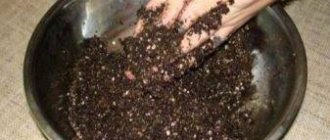Appearance, description of the variety
Violet Duchess is characterized by its bright appearance. Most often the plant has lilac or purple buds.
Each of the 20 types of violets has its own characteristics.
Leaves
The leaves of these violets are large and have a rounded heart-shaped shape. There are small fibers on the surface of the foliage, which is why they appear terry. Due to the average size of the leaves of the PC-Duchess violet, the buds themselves look massive.
The Duchess violet has green leaves with a light green tint.
Flowers
During the flowering of Saintpaulia Duchess, a group of 4-5 beautiful large buds gather above the leaves. Flower sizes reach 8 cm. Flowers, like leaves, are covered with short, thin fibers.
The main color scheme of the buds is dark purple (violet), which flows into white at the edges. The middle flowers of these violets are usually yellow.
Family and history of appearance
The plant belongs to the Gesneriev family.
PC-Duchess violets were introduced in 2001. The plant owes its origin to the breeder Svetlana Repkina. The abbreviation RS before the name is an abbreviation of the first and last name of their creator.
Description of the plant
We propose to consider the species and varietal characteristics of “Duchess” in the table:
| Options | Characteristic |
| Family | Gesneriaceae |
| Genus | Saintpolia |
| Variety | "RS-Duchess" |
| Form | herbaceous plant |
| Life cycle | perennial |
| Purpose | Decorative flowering. Indoor floriculture |
| Reproduction | Vegetative (cuttings), generative (seeds) |
| Leaf arrangement | Socket |
| Socket diameter | 40-45 cm |
| The escape | Shortened |
| Root system | fibrous, underdeveloped |
| Attaching a leaf to a stem | Chereshkovoye |
| Sheet type | Simple |
| Leaf blade shape | Round with a heart-shaped base |
| Edge of leaf blade | Crenate with smoothed teeth |
| Leaf color | Medium green |
| Flower shape | Terry star |
| Flower size | Large, up to 7 cm |
| Flower color | Plum white |
| Bloom | Year-round (with proper care and maintenance conditions) |
Blooming buds look like miniature roses
The peduncles are short, emerging from under the foliage in a dense cluster, each bearing 3-4 buds. A feature of the variety is the long opening of the buds. But the flowering itself, if the proper conditions are met, is quite long - up to a month. “Duchess” is distinguished by its hard work: it is not lazy to bloom often.
The plant is successfully propagated by cuttings, which is best done in the spring.
Features of caring for violets Duchess at home
At home, the flower needs to create suitable conditions. They are made up of several factors.
Temperature
Violet wedding bouquet - flower description
To grow an adult plant, an air temperature of +20 to +23 °C is required. Young violets require more heat; they are recommended to be grown at temperatures from +23 to +26 °C.
Lighting
Violets love light very much, but they do not do well in direct sunlight. The best place for this plant may be a window sill in the eastern part of the house. If there is none, you can equip a part of the window for the flower where there is least light.
Important! The Duchess has a capricious character, which is why many violet growers advise placing a flower pot on a window on the north side of the house. This way the plant will bloom better and retain its beauty longer.
Watering
To water the plants, use settled tap water at room temperature. You need to water the violet in such a way as to avoid the accumulation of water near the shoots and leaves. The soil must be kept moist; it can only dry out by a third, since otherwise the leaves will begin to dry out and fall off.
Spraying
Violets do not like spraying. If the flower does become dusty, you should use water at room temperature and carefully wash off the dust, and then blot everything with a napkin.
Humidity
Under no circumstances should the plant be placed in rooms with high humidity. If moisture gets on the stems and leaves of a delicate flower, it will die. It is better to place it in a place with a rather dry microclimate.
Priming
Due to the complex nature of the plant, you need to choose the soil carefully, otherwise the flower will get sick and even die. Like all indoor plants, violets prefer soft soil in which there is no obstruction of oxygen to the roots.
The main features to remember when choosing soil:
- The soil should be chosen saturated with microelements.
- Nothing should have grown in this soil for a year.
- Before planting, you should feed the soil; for this it is better to use phosphorus and potassium. Afterwards you should fertilize regularly.
- An excellent option would be soil from the forest.
Important! Don't forget about drainage in the pot. It can be found in any specialty store.
Feeding
It is necessary to feed the violet twice a month throughout the year. After the transplant, a break is taken for 4-6 weeks. You can use mineral fertilizers for flowering plants.
Violets require fertilizing all year round, which is carried out twice a month. A break of 4 to 6 weeks is needed only after the transplant. To feed, you can use a mineral complex that fertilizes flowering plants.
Care
When caring for a plant, you need to put in a lot of effort. Any mistake can have a detrimental effect on the condition of the flower and lead to its death. You need to know all the features of growing the “Duchess” variety.
Watering
The violet should be watered with clean, soft water that has settled for at least a day. Before watering, it needs to be slightly warmed up, because... roots love warmth very much. The plant needs to be supplied with water when the soil becomes dry. Be sure to pour the liquid along the edge of the pot and not on the roots.
Important! If water gets on the leaves, dry them immediately with a napkin. Otherwise, the plant will begin to rot. Also, after each watering, pour out the water from the pan to prevent the development of fungus.
Transfer
The “Duchess” does not like to be disturbed once again.
You will not have to replant the plant often. The exception is the case when the flower is sick - it is necessary to place it in new soil.
Transplantation is carried out once or twice a year. The ideal time for this is autumn and spring.
The best transplant option is transshipment.
Fertilizer and feeding
Fertilizer for violets can be purchased at any store. There you can get detailed instructions for its use. The flower needs feeding most of all during the formation of buds. It is better to apply fertilizers after watering so as not to burn the sensitive roots.
When and how does it bloom
Homemade bullfight violet - description of the flower
The plant has five petals with a plum-white hue. The flower usually has 5-6 brushes that form a beautiful bouquet. The flowers themselves, like violet foliage, are covered with small fibers, so they seem terry to the touch.
The plant has 5 petals that form a beautiful bouquet
Flower shapes
Violet buds are shaped like a ball and can remain in this shape for a very long time. When the bud blooms, it visually resembles a rose flower.
Flowering period
You can enjoy the beauty of violet flowers from September to March. After the plant has flowered, a small seed pod is formed.
Changes in care during the flowering period
At hotter temperatures, the plant has solid bright flowers, and when the temperature drops, white is added. In order for the Duchess to fully express her color scheme, it is recommended to place her on the lower shelves of racks or cool window sills during the flowering period. Despite the flower’s love for light, it should not be placed in direct sunlight, as this leads to yellowing of the leaves and wilting of the buds. You can tell that there is too much light by the thickening of the center and short peduncles that find it difficult to get up. The plant needs a lot of free space, and in cramped conditions the leaves take a more vertical position.
In order for a beautiful rosette to form and the flowers to be lush, the violet needs a long daylight hours, correctly selected pot and soil, regulated watering and periodic feeding. As for temperature and humidity, they occupy secondary positions in care. Despite the fact that the plant does not tolerate heat well, good room ventilation compensates for this.
How to propagate by leaf
In order to propagate violet leaves, you will need:
- healthy leaf;
- small pot;
- soil mix (60% vermiculite, 20% perlite, 20% peat);
- thin knife or scalpel;
- container;
- film.
If everything is done correctly, then after 3 months you will receive a new plant.
Instructions for propagating violets by leaf:
- Select the healthiest leaf you see on your plant. It should not be too young, but not too old either.
- Cut it, leaving the stem on one side with 75% of the surface of the leaf blade. The incision is made at an angle. This will speed up the germination process.
- Take a small pot with a drainage hole and fill it with soil mixture. The size of the drainage hole is no larger than the diameter of a ballpoint pen. Soil will “flow” through large holes. The diameter of the pot is no more than 5 cm.
- Moisten the mixture with water.
- Now insert the leaf (stem side down) into the mixture, placing it directly in the center of the pot. Only the rod is buried in the ground, but not the leaf plate.
- Place the pot with the leaf in a container and cover with film to create a greenhouse effect.
We recommend that you learn how to prepare soil for violets with your own hands and what the composition should be.
Now we just have to wait for the germination results to appear. Once the shoots are strong enough (4-6 months), you can separate them and replant them.
Video: How to grow a violet from a leaf
Reproduction
Violet Black Pearl - description of a home flower
Several methods have been invented for propagating violets at home.
Germination of seeds
It is not possible to obtain a full-fledged, strong plant using seed. To obtain seedlings, special conditions are required for their growth.
Rooting cuttings
The vegetative method is also suitable for plant propagation. To grow violets by rooting cuttings, you need to select a healthy leaf and cut it obliquely at the petiole, leaving about 3-5 cm. It is best to root in boiled water. However, it is also possible in the ground. It should be moist and loose.
To grow violets vegetatively, you can use a healthy leaf
The petioles should be placed at a depth of no more than 2 cm. Cover the seedling with film, regularly ventilating and moistening the soil. The pot must be placed in a warm place (with a temperature not lower than +20 °C), where there is diffused light. The rooting period ranges from 4 to 6 weeks.
Reproduction by flower
With the help of a flower you can grow yourself another violet. To do this, you need to cut off the flower along with the leaf underneath it. Afterwards, place it in the rooter and cover with oilcloth.
Transfer
"Duchess" (violet) prefers to be replanted no more than twice a year. Most often this is done in the autumn and spring periods. If the flower has problems, it gets sick, then it needs to be replanted immediately. It should be replanted into a new pot, taking into account the size of the root system. The soil needs to be taken new, fresh. This will give the flower the opportunity to develop with even greater strength.
Possible problems in growing RS-Duchess violets
Violets, like other indoor plants, sometimes get sick. Every problem has its own solution, the main thing is to accurately determine the cause.
Problems with leaves
These violets also suffer from fungal diseases. If there is excess moisture, the impact falls primarily on the roots and leaves. If this happens, you should first apply a fungicide. In addition to fungus, plants are susceptible to powdery mildew, as well as gray mold or fusarium. This can happen due to low temperatures, moisture on the foliage or drafts.
Pests
The mite is the most dangerous pest for violets. It can be detected by drooping and withering leaves. In this case, it is almost impossible to cure plants. There is only one way: spray with a special anti-tick product.
In addition, the violet can become infected with scale insects or aphids. During the flowering period there is a risk of damage by root-knot nematodes. This disease is accompanied by growths on the roots - galls, in which the development and reproduction of worms occurs.
Important! In this case, you need to immediately get rid of both the plant and the substrate and disinfect the pot.
Diseases
A violet, like any plant, can easily get sick from another flower nearby. You can also spread the disease with dirty hands if you touch violet leaves with them. Pets also often carry many diseases on their fur. Most often the plant gets sick in May and September.
Due to dampness, low temperature or stagnation of water in the pot, brown or gray spots may appear on the leaves or flowers - fungus. Signs of a fungal infection may include a musty smell on the flower or the softness of the shoot itself. If they are detected, you should immediately remove the damaged areas, then start replacing the soil, and before replanting, treat everything with a fungicide.
Signs of improper care
One of the signs of improper care is the appearance of gray rot when water gets on the leaves. Affected leaves must be removed. If you water the plant with cold water, there is a risk of brown spots appearing. In case of physical damage, a sharp change in temperature, draft or dry air, the leaves dry out. The same problem can be encountered if you overdo it with fertilizers or if there is not enough light.
Thus, like any violet, PC-Duchess requires careful care and attention. If handled correctly, it will delight you with bright colors and exquisite beauty of leaves. The Duchess is suitable for experienced flower growers, but it is not recommended for beginners to start it.
Growing conditions
To get a beauty with lush buds, you will have to be patient. At the first flowering, this capricious plant blooms small, faded flowers that bear little resemblance to the expected result. With proper care, a lady can please the gardener with a lush, variegated inflorescence 3-4 times.
Priming
The choice of soil should be approached with special attention, otherwise the plant will simply die. Almost all indoor plants love soft, airy mail that does not interfere with the flow of oxygen to the roots
Almost all indoor plants love soft, airy air that does not interfere with the flow of oxygen to the roots.
Here are some features in choosing soil:
- The soil must be saturated with microelements. Choose land on which nothing has grown for at least a year.
- Before planting, the soil needs to be fed with phosphorus and potassium. Then you need to fertilize the soil with vitamins regularly.
- It is better to take land from the forest. There are many pests in the garden and vegetable garden that will subsequently destroy the flower.
- Be sure to place drainage in the pot. It can be purchased at any flower shop.
Pot
The size of the pot directly depends on how the plant will behave in the future. For a young “Duchess”, the optimal pot size will be 9-13 cm. With a smaller container, the flower will begin to fade and the leaves will turn yellow. If you plant a violet in a large pot, then its entire surface will sprout abundantly with lush foliage, but the lady will have no strength left for flowers.
Important! The “Duchess” cannot stand living in the cold earth. You can insulate it by placing the flower on a larger tray filled with sawdust or placing the plant on a block of wood or foam plastic
Lighting
Violet does not like the absence of light, as well as direct sunlight. It is better to place it on a windowsill whose windows face east. If this is not possible, then place it near a darkened window.
Temperature
“Duchess” is quite capricious, according to notes from violet growers, flowering will be better and longer if you keep the flower on a north window.
However, you should not overdo it; in very cool rooms it will not only refuse to bloom, but will die.
This also applies to the root system. This variety, like many Repkina varieties, does not like heat, because of this the flowers will fade and you may not get “roses”. But at the same time, you should take care of the absence of drafts - the violet does not tolerate them.
Humidity
The plant does not like rooms with high humidity. The fragile creature will begin to rot if water gets on its leaves and stems. It is better to keep it where the air is dry.
Diseases and pests
- Powdery mildew is white spots on the leaves and stems of a plant that may appear due to improper conditions for keeping violets. Diseased plants are treated with a single spraying of fundozol. If the procedure does not help, you can repeat it after 10 days.
- Late blight is a disease caused by the penetration of a fungus into a flower through the root of a plant or wounds on its leaves. You will have to destroy the diseased flower and sterilize the pot. Therefore, it is easier to prevent late blight: monitor the humidity in the room, do not allow it to exceed the norm. It is also recommended to add superphosphate fertilizer to the soil.
- Gray rot is a brown fluffy coating on the leaves and stems of violets; it is a botrytis fungus. It can get into the soil from the outside, so it is recommended to freeze or sterilize the soil when planting. As a preventive measure, do not overdo it with watering and monitor the room temperature. Remove diseased violet leaves immediately to prevent the fungus from spreading to healthy parts of the plant.
- Aphids are brought into the house on other plants, most often cut flowers. The aphids drink all the juice from the violets, and then the plant develops and blooms incompletely. Aphids can be controlled using chemical plant protection products such as Mospilan or Actellik.











